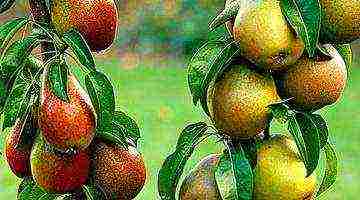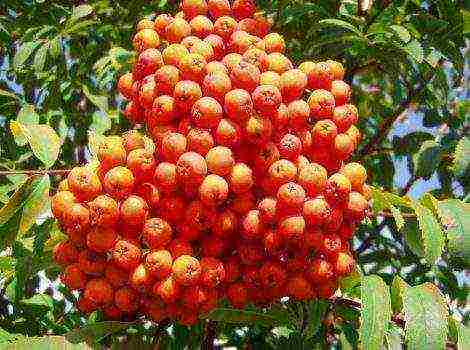Content [show]
Cultivation of tomatoes in a greenhouse is fraught with a number of difficulties; agricultural techniques are also different from the usual ones carried out for tomatoes. Not only plants require a more "high-tech" approach, the greenhouse also needs to be looked after: change the soil every two years, cover on too hot days, remove the snow "caps" in winter. But the harvest obtained in the greenhouse is many times higher than the indicators of tomato cultivation in the open field. In addition, there are greenhouse varieties of tomatoes that simply cannot be grown without a greenhouse shelter.
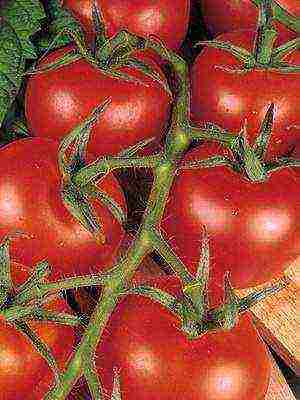
Varieties for greenhouse gardens
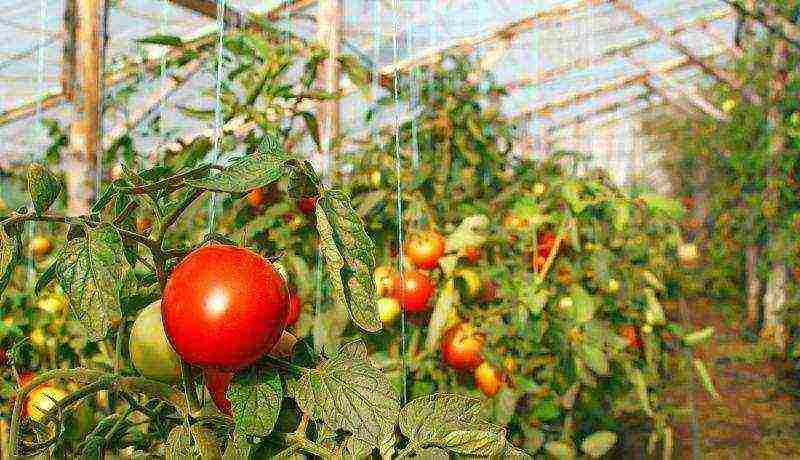 In many ways, it is good varieties of tomatoes for greenhouses that determine half of the success. They should be selected as carefully for the greenhouse as for uncovered ground. After all, the variety of tomatoes bred to date is simply amazing. Every year, new varieties of tomatoes for greenhouses appear, designed for certain growing purposes.
In many ways, it is good varieties of tomatoes for greenhouses that determine half of the success. They should be selected as carefully for the greenhouse as for uncovered ground. After all, the variety of tomatoes bred to date is simply amazing. Every year, new varieties of tomatoes for greenhouses appear, designed for certain growing purposes.
Variety of varieties: how to choose the right one?
First of all, when choosing tomato varieties for greenhouses, you need to take into account their dimensions. According to the type of growth, all tomatoes are divided into: indeterminate, semi-determinant, determinant. If we translate these terms into a more familiar language - tall, medium-sized, short.
Indeterminate varieties - most suitable for greenhouses
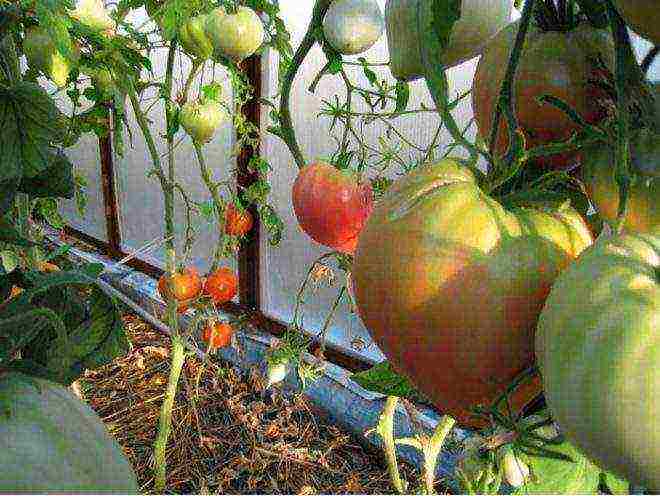 If the greenhouse is spacious and high, then it is better to opt for indeterminate varieties. Indeterminate tomato is a plant with unlimited growth, reaching 1.6-2 meters (sometimes even higher). Caring for such tomatoes is more difficult, since they have to be tied up and the side stepchildren have to be tied up and removed from the bush, but they also give a higher yield - 40-50 kilograms per 1 sq.
If the greenhouse is spacious and high, then it is better to opt for indeterminate varieties. Indeterminate tomato is a plant with unlimited growth, reaching 1.6-2 meters (sometimes even higher). Caring for such tomatoes is more difficult, since they have to be tied up and the side stepchildren have to be tied up and removed from the bush, but they also give a higher yield - 40-50 kilograms per 1 sq.
Sometimes varieties with high growth are planted together with medium-sized ones so that the yield of the harvest goes on continuously. In this case, semi-determinant varieties are planted along the walls of the greenhouse, and taller indeterminate tomatoes are placed in the center - along the path. At the same time, it is important to leave a distance between medium-sized bushes - 30-40 cm, and tall ones - 50-60 cm. It is not recommended to plant tomatoes too densely in the garden. A large amount of foliage will shade a neighboring plant, create excessive moisture, which tomatoes do not like. In addition, excessive moisture in the air and soil is a favorable environment for the development of all types of rot, which so often bother tomatoes.
The best representatives of indeterminate varieties for greenhouse gardens
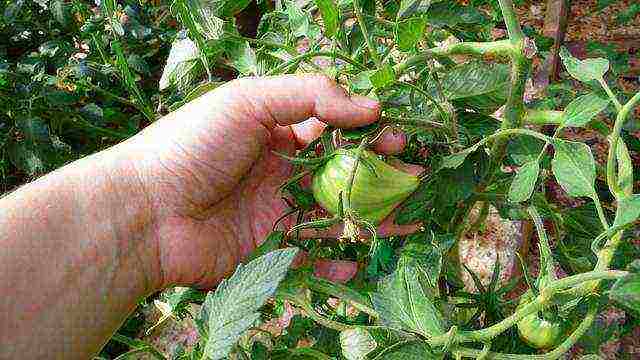 Speaking about which varieties of tomatoes are the most productive for greenhouses, the first thing to say is indeterminate. They are more large-fruited, their top is constantly growing, throwing out all new inflorescences that tie fruits over time, so the yield is large.
Speaking about which varieties of tomatoes are the most productive for greenhouses, the first thing to say is indeterminate. They are more large-fruited, their top is constantly growing, throwing out all new inflorescences that tie fruits over time, so the yield is large.
In practice, it has been proven that the best tomato varieties for greenhouses are indeterminate and large-fruited, consistently yielding. These include the following representatives: Bull heart, Abakan pink, Bovine heart, King orange, Lopatinsky, Pink elephant, Dvukolor, De Barao. Reading reviews about the best tomatoes for the greenhouse, all of them can be found in the ranking of the most fertile.
De Barao - multiple tomato champion
An excellent answer to the question: which tomatoes are the most productive and unpretentious for greenhouses will be the De Barao variety. It has long won the first place among indeterminate tomato varieties. Since the nineties of the last century, this variety has been cultivated in almost all regions of Russia. De Barao is a variety embodied in many different varieties: Gold, Black, Royal, Pink, Red, Orange. This variety, as strange as it may sound, is devoid of negative qualities: easy to care for, the fruiting period is long, resistant to frost, diseases and pests, can grow in shaded areas.
The variety belongs to the carp, which significantly increases its yield. Indeed, from 5 to 10 tomatoes are formed on one bunch. The fruits themselves are oblong in shape, weighing ≈100 grams each. The colors are varied: yellow, red, crimson, pink, black, orange. The color range is determined by the selected variety. Tomatoes are characterized by a dense pulp structure, which prolongs their keeping quality. They are used for a variety of purposes - in fresh salads, in everyday recipes, in pickling and pickling. The only thing that you can "find fault with" is the high growth of De Barao. On average, its height reaches 2 meters, but it can also exceed this mark, reaching three to four meters. This variety is a great option for novice gardeners and gardeners.
Semi-determinant tomato varieties
The role of the "partner" of indeterminate tomatoes in greenhouse conditions is often performed by semi-determinant varieties of tomatoes, they are slightly lower in growth.
If the average growth of indeterminate tomatoes is about two meters, then for medium-sized tomatoes this mark is maximum. Basically, the average height of semi-determinant varieties is 1.5 -1.8 m. They are chosen not only because of their growth, they give a harvest ten to twelve days earlier than their "tall brothers".
The best representatives of semi-determinant varieties for greenhouse gardens
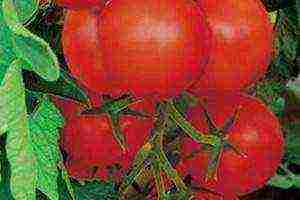 The best medium-sized representatives were recognized greenhouse tomatoes of the following varieties: Baron F1, Kupets F1, Gravitet F1, Silhouette F1, Magnus F1, Khlynovsky F1, Ivet F1, Krasnaya Arrow F1. These are unusually fertile varieties that bear fruit in a short time.
The best medium-sized representatives were recognized greenhouse tomatoes of the following varieties: Baron F1, Kupets F1, Gravitet F1, Silhouette F1, Magnus F1, Khlynovsky F1, Ivet F1, Krasnaya Arrow F1. These are unusually fertile varieties that bear fruit in a short time.
Judging by the alphanumeric designation, all these tomatoes belong to hybrids (F1 stands for hybrid). Most often, modern farmers make a choice in favor of hybrids, since they are more productive and disease-resistant. Only well-proven varieties can replace hybrid plants. In the case of semi-determinant varieties, this includes the Eagle's Beak variety.
Tomato Eagle Beak
This bright tomato is a newcomer to the market of planting material, but has already taken a leading position. The variety was bred by domestic breeders and in the best way represents large varieties of tomatoes for Siberia in a greenhouse: resistant to numerous frosts in spring and a small amount of light in summer.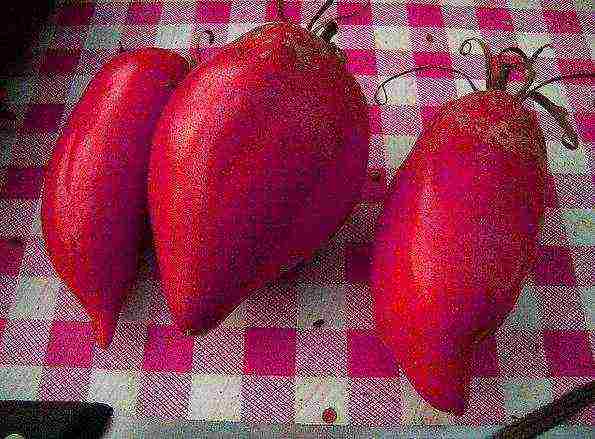
Its fruits are difficult to confuse with other tomatoes. Elongated, with a pointed end, slightly curved downward, they really look like an eagle's beak. The bright crimson color of tomatoes only enhances their appearance, making them unusually attractive. The height of the bush is average - 1.5 meters, the yield is high - 10-15 kg / sq.m.Juicy raspberry tomatoes, very tasty, large. The weight of one tomato harvested at the beginning of fruiting is up to 800 grams, then the weight is reduced to 400 grams. The pulp is very sweet and juicy. Eagle's beak tomatoes do not deteriorate for a long time and retain their visual appeal well during storage. By design, they are included in the category of salad varieties and it is best to eat them fresh or squeeze juices from them, as well as prepare tomato paste. They are of little use for canning, since large fruits run the risk of not fitting into the jar. This variety also has disadvantages regarding greenhouse cultivation. It does not belong to a self-pollinating species, so pollination will become an additional item in plant care.
Determinant varieties - the best option for cold regions
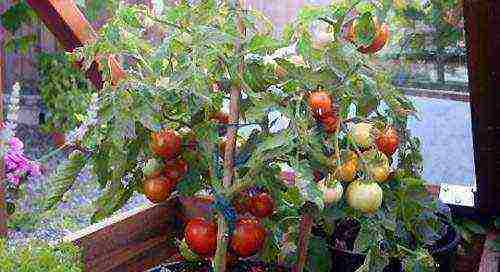 When asked which tomatoes are best planted in a greenhouse, many experienced gardeners recommend low-growing varieties. Determinant tomato varieties for the Urals best tolerate even the most difficult conditions in cold regions. The most suitable tomato varieties for the Urals in the greenhouse: Adeline, Iceberg, Arctic rose, Fighter (another name is Buyan), Top ten, Mongolian dwarf, Generator F1, Nikola, Little Red Riding Hood, Labrador, Lagidny, Pride of Siberia, Monk.
When asked which tomatoes are best planted in a greenhouse, many experienced gardeners recommend low-growing varieties. Determinant tomato varieties for the Urals best tolerate even the most difficult conditions in cold regions. The most suitable tomato varieties for the Urals in the greenhouse: Adeline, Iceberg, Arctic rose, Fighter (another name is Buyan), Top ten, Mongolian dwarf, Generator F1, Nikola, Little Red Riding Hood, Labrador, Lagidny, Pride of Siberia, Monk.
Mongolian dwarf tomato
Relatively recently, breeders have received an interesting variety Mongolian dwarf, but has already earned good reviews from lovers of unpretentious garden crops. The variety is interesting, first of all, in the way of growth. Upward, it grows only 30-50 cm, and then begins to spread in breadth. Its lateral shoots reach a length of 1 m and tend downward. 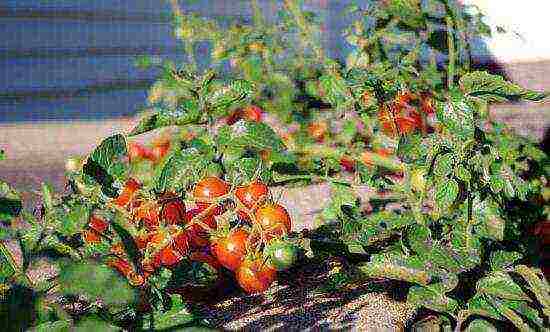 Therefore, this variety is often called creeping. It is very unpretentious, does not need to be attached to the support and the formation of a bush. The only thing that will need to be done is raised ridges so that the creeping side shoots are less in contact with the ground.
Therefore, this variety is often called creeping. It is very unpretentious, does not need to be attached to the support and the formation of a bush. The only thing that will need to be done is raised ridges so that the creeping side shoots are less in contact with the ground.
The Mongolian dwarf tomato gives a high yield of excellent quality. Each tomato weighs 100-200 grams, bright scarlet, spherical, without ribs. Tomatoes are universal in their purpose: they can be eaten fresh, used for cooking any dishes, and can also be preserved. The advantages of the variety are ease of care, non-capricious "character", high fertility and endurance to low temperatures. Good taste of fruits, their versatility, keeping quality and transportability are also considered to be the advantages of the Mongolian dwarf tomato.
Early among early
 In terms of ripening, tomatoes for greenhouses are greenhouse varieties of tomatoes, early ripening, mid-ripening or late-ripening. When choosing varieties according to this criterion, a novice gardener is faced with a dilemma: what are the best varieties of tomatoes for greenhouses to choose - early ripening, medium or late?
In terms of ripening, tomatoes for greenhouses are greenhouse varieties of tomatoes, early ripening, mid-ripening or late-ripening. When choosing varieties according to this criterion, a novice gardener is faced with a dilemma: what are the best varieties of tomatoes for greenhouses to choose - early ripening, medium or late?
For Russian climatic conditions, it is better to choose tomatoes with an early yield. Such tomatoes grow faster, which means that the chances are increased that they will have time to reveal their full potential and form a high-quality harvest. In addition, early varieties of tomatoes for greenhouses have time to produce fruits before all diseases and pests begin to "press" on the plants en masse, which also affects the fertility indicators.
The earliest tomatoes are a guarantee of the harvest
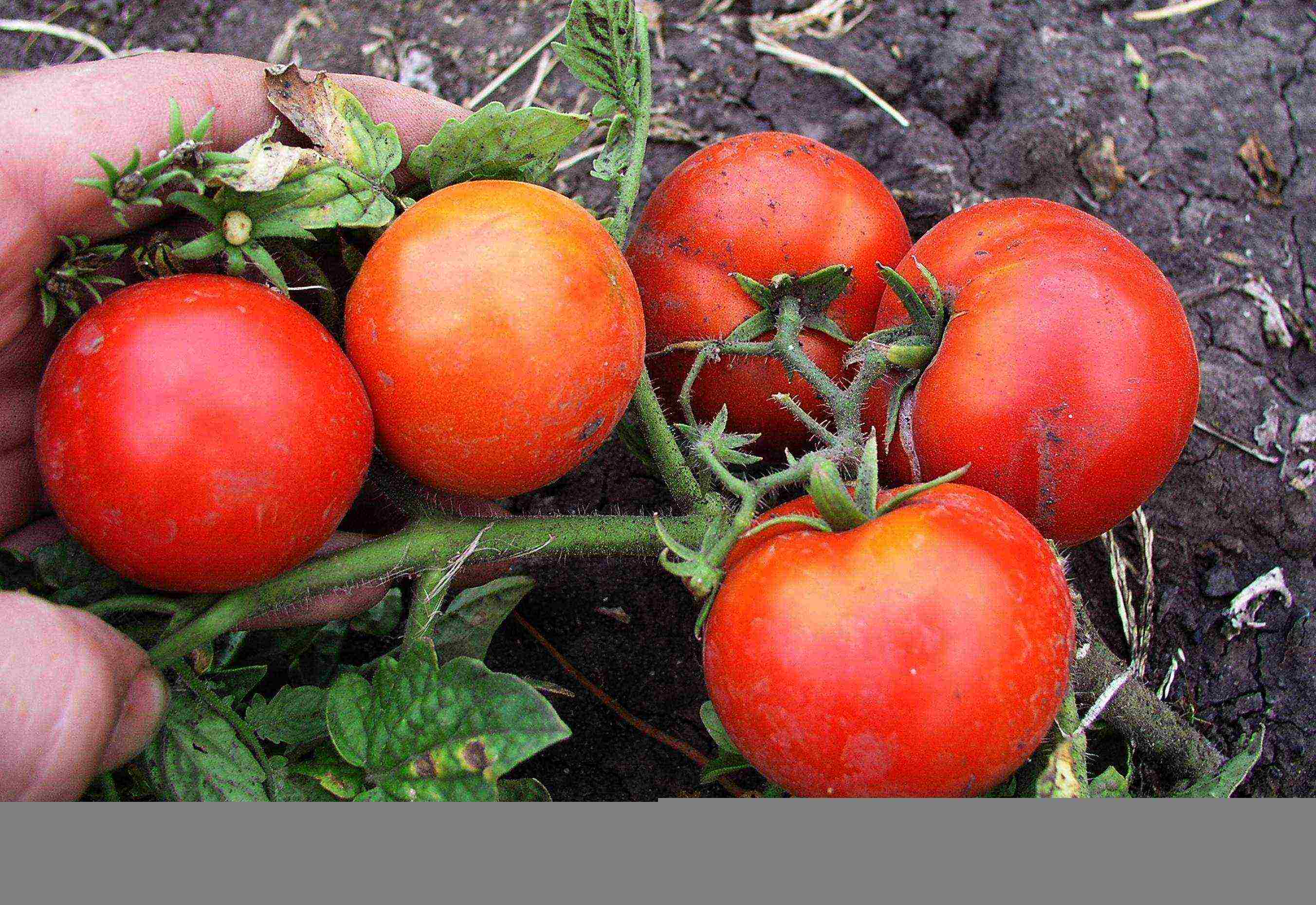 As a rule, super early varieties of tomatoes for greenhouses yield a harvest three months after the first leaves of seedlings emerge from the soil. Recently, the earliest varieties of tomatoes have begun to appear, with a growing season of only 70 days. Such super-early varieties of tomatoes received a positive assessment: Arktika, Boni M, Pygmy, Karbo. Hybrids of super early yields that give excellent results when grown in sheltered ridges - Aurora, Biathlon, Debut, Dolphin, Yesenia, Rosan.
As a rule, super early varieties of tomatoes for greenhouses yield a harvest three months after the first leaves of seedlings emerge from the soil. Recently, the earliest varieties of tomatoes have begun to appear, with a growing season of only 70 days. Such super-early varieties of tomatoes received a positive assessment: Arktika, Boni M, Pygmy, Karbo. Hybrids of super early yields that give excellent results when grown in sheltered ridges - Aurora, Biathlon, Debut, Dolphin, Yesenia, Rosan.
One of the most beloved varieties of ultra-early ripening is the Labrador tomato.
Tomato variety Labrador
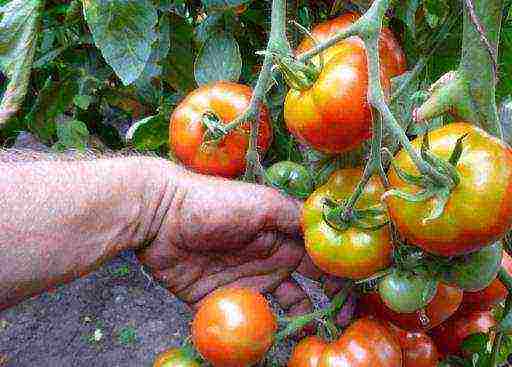 This variety is characterized by increased early maturity of fruits.Begins to bear fruit at the end of June, subject to sowing seeds to obtain seedlings at the end of March - in the first decade of April. The tight timing of fruit ripening makes it possible to avoid late blight. The bush is determinate, reaching a height of 50-60 centimeters. It is easy to care for, does not require a garter, without pinching. The yields are good. Fruiting is long and abundant. Fruit sizes are medium (80-150 gr). The shape is rounded-flattened, the color is bright red. Suitable for all gastronomic purposes, including salting and canning.
This variety is characterized by increased early maturity of fruits.Begins to bear fruit at the end of June, subject to sowing seeds to obtain seedlings at the end of March - in the first decade of April. The tight timing of fruit ripening makes it possible to avoid late blight. The bush is determinate, reaching a height of 50-60 centimeters. It is easy to care for, does not require a garter, without pinching. The yields are good. Fruiting is long and abundant. Fruit sizes are medium (80-150 gr). The shape is rounded-flattened, the color is bright red. Suitable for all gastronomic purposes, including salting and canning.
Salad and sweet varieties of tomatoes
If the choice of tomato is made according to its taste, then here too the breeders have tried and brought out sweet varieties of tomatoes for the greenhouse, which have no equal in terms of sweetness and juiciness of fruits.
 These tomatoes are intended to be eaten fresh or juiced. The main requirement put forward to them is the sweetness and juiciness of the pulp, reduced "boneiness".
These tomatoes are intended to be eaten fresh or juiced. The main requirement put forward to them is the sweetness and juiciness of the pulp, reduced "boneiness".
Sweet, practically non-sour tomatoes, highly appreciated for their great taste and aroma, are represented by the following varieties: Orange, Alpinog, Bull's Heart, Dina, Raspberry Giant, Cardinal, Bear in the North, Honey Spas, Pink Elephant, Pink Giant, Pink Flamingo F1 , F1 handbag, F1 Samara, Tsifomandra.
If we talk about cherry tomatoes, so beloved for their small, colorful mini-fruits, then among them there are also tomato crumbs with a honey flavor. Such small, colorful and sweetest tomatoes are very fond of children. They look extremely decorative on the bush, and they have no equal in the quality of the "design" of dishes. Cherry tomatoes with unusually sweet pulp include such varieties as: Sugar Plum, Cherry Blossam F1, Yellow Cherry, Sweet Bunch, Honey Drop, Salute.
Yellow cherry - fruit tomato
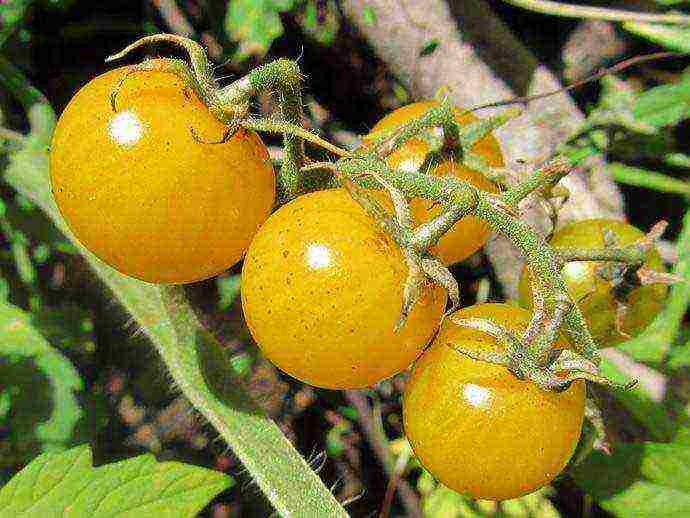 The very sweet pulp of Yellow Cherry tomatoes approaches fruit in taste. Small, bright, yellow ball fruits grow on a cluster of 50-60 pieces. One crumb tomato weighs only 15-20 grams, but thanks to the lush bunches, such tomatoes yield a very plentiful harvest - about four kilograms per bush. Such bushes look very beautiful. This hybrid belongs to the indeterminate varieties, the average plant height is 1.5 m. It is characterized by an extremely early return of the harvest - the growing season lasts about 80 days. Tomato variety Yellow cherry can be grown in both sheltered and uncovered beds. The disadvantages of the variety include not very high resistance to such "tomato troubles" as tobacco mosaic and fusarium. Therefore, special attention should be paid to the treatment of plants against diseases. Another "minus" of the variety - the fruits are not suitable for long-term storage. But this inconvenience is covered by the fact that they can be preserved. Yellow cherry tomatoes will decorate any jar, especially when they become a part of the pickled assortment “Summer in a Jar”.
The very sweet pulp of Yellow Cherry tomatoes approaches fruit in taste. Small, bright, yellow ball fruits grow on a cluster of 50-60 pieces. One crumb tomato weighs only 15-20 grams, but thanks to the lush bunches, such tomatoes yield a very plentiful harvest - about four kilograms per bush. Such bushes look very beautiful. This hybrid belongs to the indeterminate varieties, the average plant height is 1.5 m. It is characterized by an extremely early return of the harvest - the growing season lasts about 80 days. Tomato variety Yellow cherry can be grown in both sheltered and uncovered beds. The disadvantages of the variety include not very high resistance to such "tomato troubles" as tobacco mosaic and fusarium. Therefore, special attention should be paid to the treatment of plants against diseases. Another "minus" of the variety - the fruits are not suitable for long-term storage. But this inconvenience is covered by the fact that they can be preserved. Yellow cherry tomatoes will decorate any jar, especially when they become a part of the pickled assortment “Summer in a Jar”.
Tomato varieties and hybrids are so diverse that even an experienced vegetable grower sometimes finds it difficult to choose. Of course, everyone has their own priorities - someone loves large and fleshy tomatoes, someone prefers small but sweet ones, and someone is forced to select a variety taking into account the climate of their region. But in any case, every gardener tries to choose the most productive varieties of tomatoes for the garden, which also have excellent taste.
How to choose a variety
When choosing a tomato variety, it is necessary to take into account many factors that affect the yield of a vegetable crop. Firstly, you need to decide in advance on the place where vegetables will be planted, and purchase seeds, taking into account the growing conditions. The process of growing tomatoes in open and protected soil has significant differences - even the highest-yielding varieties of tomatoes for beds will not give high-quality fruits when planted in a greenhouse. Conversely, greenhouse varieties will not give the expected yield when grown in the garden.
When purchasing tomato seeds, you should take into account the taste properties of each specific variety.Some tomatoes express their taste better immediately after removal from the bush, others reveal it after salting or preservation, and some are very tasty in an unripe form, while when ripe they have a very ordinary and primitive taste.
It is also important to decide on the question - what tomatoes will be grown for what? If for salting, then you should give preference to medium-sized fruits with sweet dense pulp. If for conservation, then it is better to choose small fruits with a dense, non-bursting skin. The choice of salad varieties is endless - these are tomatoes of various shapes, colors and tastes. They are not suitable for blanks, but they have a very fleshy structure and excellent taste.
Yield also depends to some extent on the shape and size of the bush. Low-growing varieties are less demanding to care for, but fewer fruits grow on them. It is possible to increase the yield of such species only at the expense of a large number of beds. Tall varieties need tying and installation of supports, but you can also get a higher yield from them. In addition, tall plants save space.
When choosing fruitful varieties of tomatoes for open ground, it will be useful to take into account the period of their ripening. If you want to have fresh homemade tomatoes on the table from early spring to winter, you will have to plant many different varieties with different ripening periods. Well, the most important factor affecting yield is climate adaptability. It is important to understand which varieties of tomatoes can grow in a particular climate. So intended for the southern regions, it is very difficult to grow in the northern latitudes - at best, the yield will be minimal, and at worst, the plants will not be able to develop due to the cold, and the yield will be zero. Therefore, for the northern regions it is better to choose Siberian tomatoes, bred specifically for cold climates.
Video "Overview of many varieties of tomatoes"
Video review of popular fruit tomatoes.
The best tomatoes
Tomatoes can be classified according to different parameters:
By yield
High-yielding varieties of tomatoes are those from which you can collect 5 or more kilograms of vegetables from one square meter of planting. It should be said that many recently bred Dutch varieties, as well as similar domestic breeding, are capable of producing up to 20 kg per 1 m of planting, but these hybrids are grown mainly in greenhouses for commercial purposes. For a high yield tomato from open ground, it is better to plant varieties designed specifically for these conditions:
- Waterfall - a tall tomato of early ripening with dense oblong fruits of a bright orange color, with proper care, it can yield a yield of 6-8 kg;
- Anastasia is a tall (100-130 cm) mid-season variety with bright red, sometimes burgundy fruits of medium size (170-200 g), when the necessary conditions are created, up to 12 kg of the crop can be harvested;
- Raspberry giant is an early variety with very large (up to 500 g) pink fruits, due to which high yields are obtained, resistant to diseases and pests;
- Nastena F1 is an early ripe tall (120-150 cm) hybrid with large (up to 300 g) red fleshy fruits, tolerates low temperatures and high humidity, is resistant to diseases, very high-yielding - 16-18 kg per 1 meter of planting;
- Diabolic - compact and fairly tall bushes (100-120 cm) with red oblong fruits weighing (120-140 g), tomatoes are perfectly transported, suitable for harvesting, not susceptible to diseases, when grown for industrial purposes they yield 400-600 centners per hectare of area.
Experienced vegetable growers admit that extremely fruitful tomato varieties do not have high taste and aroma. This is due to the fact that all the forces of such plants are aimed at the formation of multiple fruits, and not at the concentration of sugars and nutrient fibers.
By type of bush
According to the height of the bush, tomatoes are divided into:
- determinant (undersized) - their height is 50-100 cm, they do not need to remove excess shoots and tie;
- and indeterminate (tall) - bushes of such tomatoes can grow up to 2 meters, often require the installation of supports and correction of the bush, in turn are subdivided into standard species (with strong compact bushes) and non-standard (with thin stems prone to lodging and needing in supports);
- there are also medium-sized tomatoes, the height of which varies in the range of 80-110 cm.
The most productive and undersized varieties:
- Sanka is an ultra-early hybrid variety with compact bushes (30-40 cm) and round red fruits;
- Rio Grande - a high-yielding tomato with powerful bushes up to 60 cm high, fruits are even, elongated, medium-sized (100-120 g), universal - suitable for canning and processing;
- Bagheera F1 is an early undersized hybrid with large (180-220 g) fruits suitable for any processing and transportation.
Among the tomatoes of an average ripening period, one can distinguish the high-yielding tomato "Volgogradskiy 5/95". This is a standard plant 70-120 cm high with smooth red fruits weighing 80-150 g. Fruits are well transported and stored for a long time. Of the tall, fruitful tomatoes, the following can be distinguished:
- De Barao - this variety has many hybrids that differ in shape and color, but this variety of tomato unites the invariable sweet taste of fleshy fruits, reaching a weight of 300-400 g, in which there are practically no seeds;
- Tarasenko 2 is a hybrid of late ripening, stems are high (up to 2 m) with multiple clusters, on which there are many small (30-40 g) fruits with a total weight of up to 3 kg.
Many vegetable growers prefer standard types of tomatoes, since they do not need tying and are less demanding to care for.
To size
By the size of the fruit, tomatoes are divided into large (300-400 g), very large (up to 700-1000 g), medium, small, and very small - "cherry". Large-fruited varieties are:
- Miracle of the Earth - the fruits are elongated, heart-shaped, reaching a weight of 400-500 g, have a dense sweetish pulp;
- Andreevsky surprise - tall (up to 2 m) salad variety with very large (400-700 g) fruits, tomato color - raspberry, pulp is fleshy and juicy, seeds are practically absent;
- Bovine heart - a tomato of the middle ripening period with very large (400-600 g) fruits with a dense sweetish pulp;
- Raspberry giant - fruits are large (600-800 g), flattened, with tender pulp, seeds are almost absent.
Small varieties include the following:
- Wonder of the world - small fruits resembling lemon in shape and color, the mass of tomatoes is 50-100 g, up to 50 pieces can be collected from one bush;
- Black Moor is a mid-season hybrid with small brownish fruits weighing 30-50 g, suitable for conservation;
- Tarasenko 2 - tall bushes with heavy clusters, each of which ripens more than 35 small (50-60 g) fruits.
Ornamental varieties of miniature tomatoes, known to us as "cherry", have high taste properties. These tomatoes are successfully grown both in the garden and in pots on the balconies. Among the most popular are: Noon, Green Pearl, Lemon (yellow), Amber, Honey Drop.
By sustainability
When it comes to the resilience of the tomato, most often it is not disease that is meant, but endurance in low temperatures. What kind of tomatoes can be grown in cold climates - this question is of most interest to residents of the northern regions. For such regions, you should choose varieties of Siberian selection, the seeds of which are adapted to these conditions.
The following varieties of tomatoes are hardy:
- The shuttle is a frost-resistant variety of Siberian selection, it is not afraid of pests, diseases and transportation, ripens in 80-100 days, the fruits are small (up to 60 g);
- Bakery plants - large-fruited (300-500 g) tomato, low bush - up to 80 cm, resistant to temperature changes;
- Destructive force - a high-yielding hybrid of Siberian selection, the fruits are medium (up to 150 g), unpretentious in care, even at low temperatures yields a yield of 5-6 kg;
- Triumphant - mid-season standard grade of Siberian selection, undersized bushes (40-50 cm), small fruits - up to 100g;
- The Snow Tale is a unique hybrid of Siberian selection, the bush of which is literally covered with small fruits, and the stems do not need to be tied up.
There are also several varieties that Ukraine has bred, but these seeds are also adapted to the conditions of the north or middle zone: Priusadebny, Gospodar, Sonyachne Kolo and others.
By the duration of ripening
According to the ripening period, tomatoes are early-ripening, mid-ripening and late-ripening, but recently many hybrids have been bred, which are called "early".Tomato varieties are called early maturing, the ripening period of which is up to 100 days. These include: Dubok, White filling, Alpha, Amur shtamb, Valentina, Don Juan - the ripening period of these varieties is 95-98 days.
Mid-season tomatoes are those that reach their full maturity in 105-115 days: Pink Elephant, Hybrid 35, Volgograd, Gigant 5, Akulina, Tsarevna and many others. It should be said that most tomatoes are mid-season, and when choosing seeds, gardeners often come across just such varieties. Tomatoes are considered late ripening, for which ripening takes from 117 to 130 days. These include: De Barao, Wonder of the World, Titanium, Brown Sugar and others. Late types of tomatoes are not very popular, but unlike early ones, they are stored longer.
The most popular varieties are the early ones, the ripening period of which is sometimes limited to 70 days. The seeds of these tomatoes are adapted to low temperatures and tolerate even slight frosts perfectly. These include: Sanka, Far North, Little Red Riding Hood, Nevsky and many others.
By storage time
Only certain varieties of tomatoes can be preserved for a long time, in which there is a special gene that inhibits the ripening of fruits. As a rule, these are late-ripening hybrids, bred specifically for the purpose of preservation. These tomatoes are harvested at the initial stage of ripeness (when they are just beginning to turn brown), and their full maturity occurs later at a temperature of 18 ° C.
These hybrids are:
- Radical, Lazar, Dominator - the fruits of these varieties are stored for more than 1 month;
- Khutorskoy pickling, Giraffe - fruits are stored for up to 4 months;
- Long Keeper, Lezhebok, New Year's - perfectly retain their taste until the New Year.
It is fair to say that long-stored hybrids have a fairly dense skin and not very pronounced taste and aroma, since their ripening occurs under artificial conditions. But, in spite of everything, this is the only way to get fresh homemade tomatoes in winter.
Video "A selection of the most popular varieties"
A video selection of the most popular tomatoes, which will help you make the right choice.
The main advantage of tall tomatoes is to save space in the beds, because the plants grown on the trellis stretch upward, rather than expanding in width. Each bush, under favorable conditions, can produce 10-12 kg of high-quality fruits, and in some varieties the yield is even higher. Since they develop longer than undersized and medium-sized varieties, they are planted in open ground with seedlings, and not seeds.
Tall tomatoes
Pros of tall tomatoes
All tall tomatoes are indeterminate, that is, their growth is not limited to the flower cluster, as in undersized tomatoes. During the entire growing season, the stem grows upward and can reach a height of 3-3.5 meters. In heated greenhouses and regions with a warm climate, such tomatoes grow and bear fruit for more than a year, while in open ground this period is much shorter. For normal fruiting, tall varieties of tomatoes need not only to be tied up, but also to form the bushes correctly.
It is important to carry out the formation of the bush and the garter correctly.
Indeterminate tomato varieties
The main advantages of indeterminate tomatoes:
- high productivity. When grown vertically, the plant forms from 20 to 40 fruit clusters, which makes it possible to collect 2 buckets of tomatoes per square meter;
- resistance to late blight. Plants tied to a trellis receive more air, are more evenly illuminated by the sun, and leaves and shoots do not have direct contact with the soil. As a result, the bushes are affected by late blight much less often;
- long-term fruiting. Unlike determinant varieties, characterized by amicable ripening, tall tomatoes bear fruit from July to late autumn, maintaining the quality of the fruit throughout the period;
- ease of care. When the bush is formed, all the stepsons are removed, as a result of which the plant turns out to be not thickened, is clearly visible and is easily processed when damaged by pests. Loosening and watering the soil at the roots is also convenient due to the lack of side shoots, and when harvesting, you do not need to bend over.
Tall tomatoes have many benefits
Selection of varieties for open ground
There are so many tall varieties of tomatoes that it is impossible to describe everything. Every year, new varieties and hybrids appear, bred by both specialists and amateur breeders. When choosing tomatoes for open ground, the following criteria are of decisive importance:
- ripening period;
- resistance to adverse environmental conditions;
- quality of tomatoes;
- keeping quality.
The secret to growing strong tall tomato seedlings
Next, you need to pay attention to the color, shape and size of the fruit, since these parameters are also quite important. For the preparation of tomato juice, red and pink tomatoes are traditionally used, since the juice from yellow, green and dark brown fruits is not very appetizing in appearance. But such multi-colored tomatoes look attractive rolled up in jars, and the summer salad from them turns out to be very bright. In addition, yellow and green tomatoes are noticeably sweeter in taste.
High-yielding varieties of tall tomatoes
For fresh consumption and juice production, the size of the tomatoes does not really matter, because they will still be processed. But for conservation, this is an important parameter, since large fruits will not crawl into the jar. That is why when choosing seeds, be sure to pay attention to the weight of the fruits indicated: from 50 to 90 - small, from 90 to 150 g - these are medium-sized tomatoes, and from 200 and above - large. In shape, tomatoes are round, pepper-shaped, flattened, elongated, ribbed, and the choice here is based only on personal preference. This does not affect taste and other qualities.
The best varieties of tomatoes
The most popular tall varieties
Tomato varieties with red and pink fruits
|
Miracle of the earth |
This tomato belongs to the early maturing. Its heart-shaped fruits have a rich crimson color. The first tomatoes grow up to 500 g, the rest have a weight of 250-350 g. Subject to the conditions of agricultural technology, one bush gives about 15 kg of tomatoes. The variety is drought-resistant, perfectly adapts to changes in weather, the fruits do not crack and have an excellent sweet taste |
|
wild Rose |
Early maturing, heat-resistant, with increased resistance to most diseases. Flat-round pink fruits grow up to 300-500 g, 6-7 kg are removed from one bush. Pleasant to the taste, juicy and fleshy pulp has a slight sourness. Not suitable for pickling and preservation, it is used mainly fresh |
|
Hybrid Tarasenko 2 |
Deservedly considered one of the best among domestic varieties. Mid-season, bears fruit very abundantly, has a high resistance to diseases. In each hand, the total mass of fruits is not less than 3 kg of weight. Tomatoes are bright red, have a round shape with a pointed top, weighing 70-90 g. Universal use |
|
Hybrid Tarasenko pink |
Universal, mid-season.The pink fruits are tender and tasty, mature, weighing up to 200 g. The total weight of tomatoes from one cluster reaches 2 kg. During the season, 7 to 10 such brushes ripen. Like all Tarasenko varieties, it is resistant to diseases, quickly adapts to dry and low-sun weather. |
|
Watermelon |
Medium early salad-type variety with red-brown fruits. The pulp is very juicy, the average weight of tomatoes is 130-150 g. Productivity - up to 3 kg per bush. Well tolerates adverse conditions, not too picky about soils |
|
Scarlet Mustang |
Mid-season, high-yielding variety with red, rather tasty fruits. The shape of the tomatoes is elongated, the length of the fruit is from 10 to 18 cm, the average weight is 200 g. It is used both fresh and for preparations for the winter. From a bush, you can collect 3.5 kg of tomatoes, even in adverse weather conditions. Disease resistance is good, undemanding to soil |
|
Cardinal |
Medium early and very productive variety. Tomatoes are large, on average about 400 g, rich raspberry color, sugary and juicy. For normal fruiting, it requires light, fertile soil and good care. The plant is resistant to diseases, quickly adapts to cold weather and drought |
The assortment of yellow-fruited tomatoes is also quite wide, and for open ground there are many good tall varieties that differ in ripening times.
The best varieties with yellow and orange fruits
|
Wonder of the world |
Mid-season, very productive tomato. Tomatoes have a rich yellow color, their shape is very reminiscent of a lemon, the average fruit weight is 60-90 g. Under favorable conditions, the plant reaches a height of 3 meters, and up to 30 fruits are tied on each cluster. The use is universal, the taste of tomatoes is very pleasant, sweet. Grows best on light soils with neutral acidity |
|
Lemon giant |
Mid-season variety with large tasty yellow tomatoes. The average weight of tomatoes is 500 g, the first fruits grow up to 700 g. They are used fresh and for making juices and sauces. Pleases with large yields with proper care, disease resistance is above average, bears fruit until late autumn |
|
Honey saved |
High-yielding, medium ripening. It has large fruits (500-600 g) of rich yellow-orange color. Tomatoes are fragrant, sweet, almost without acidity. 4-5 kg are harvested from one bush, used mainly fresh. This variety belongs to dietary ones, it can be used by people with allergies to red tomatoes. The variety is very resistant to fruit cracking, late blight and fusarium |
|
Honey drop |
Mid-early variety, characterized by small (up to 20 g) pear-shaped fruits. They are tied in bunches of 10-15 pieces per brush, have a bright yellow color, pleasant sweet taste. The main feature of the variety is a very high resistance to blackleg and late blight, in addition, the plant adapts well to dry weather and a short drop in temperature. Suitable for preservation and fresh consumption |
|
Amber cup |
Medium early and very heat resistant variety. Its fruits are oval in shape, weight about 120 g, light orange skin color. The pulp is very juicy and sweet. Plants are absolutely resistant to fusarium, verticillium and tobacco mosaic virus. Tomatoes are suitable for canning, pickling, fresh consumption |
Tomatoes with fruits of white, green, dark brown color not as widespread as traditional ones, however, there are also excellent tall varieties for open ground among them.
|
Brown sugar |
Medium late, good yielding variety. The peel of the fruit has a rich chocolate hue, the pulp is sweet and juicy, with a pleasant aroma. With proper care, 3.5 kg of tomatoes are obtained from the bush. The average weight of tomatoes is 140 g. The plant bears fruit until late autumn, tomatoes are used mainly fresh |
|
Pear black |
Mid-season and high-yielding. Tomatoes are pear-shaped and burgundy in color. 5-8 fruits develop on the hand, the average weight of which is about 70 g.The use is universal, diseases are weakly affected, the total yield is up to 5 kg per square meter |
|
White heart |
The variety is mid-season with large, heart-shaped tomatoes. The skin of the fruit is transparent white, with a slight yellowish tinge. The plant simultaneously forms 4-5 clusters, on each of which at least five fruits are tied. The average weight of tomatoes is 400 g, some specimens grow up to 800 g. The pulp is very tender, with a pleasant smell, sweet, completely devoid of sourness. The variety is resistant to diseases and adverse conditions. |
|
Emerald apple |
Mid-season popular variety. With proper cultivation, 10 kg of fruits are harvested from 1 bush. Tomatoes are delicious, flat-rounded, with emerald green skin. The average weight of a tomato is 200 g. It is very rarely affected by diseases, it tolerates dry periods well. The fruits are used for salads and juicing that tastes like kiwi |
|
Cherokee Green Gold |
A rare mid-season variety. Fruits are yellow-green on the outside and bright green on the inside with very few seeds. The juicy sweet pulp tastes like tropical fruits. Average tomato weight 400 g, used fresh. The variety is very resistant to diseases, grows well on light nutritious soils. |
In addition to the varieties described above, there are a lot of tall hybrids that give excellent yields in the open field, are easier to grow, and are less demanding on the soil. The choice largely depends on individual preferences, and it is rather difficult to say unequivocally which variety is the best.
Growing tall tomatoes
Video - Tall tomatoes: the best varieties for open ground
If your greenhouse does not exceed 170-180 cm in height, then the choice of a suitable variety is limited. What varieties of tomatoes are best planted in a greenhouse in this case? Tall indeterminate varieties are not suitable due to lack of volume for growing bushes. Stunted ones will not allow full use of the available height. But medium-sized tomatoes with a height of 100-180 cm will be ideal for planting.
The best varieties of medium-sized tomatoes for greenhouses
Among medium-sized tomatoes, you can find any necessary options - tomatoes of different sizes, colors and purposes. The best of them also have good yields and resistance to several common crop diseases.
Red varieties of medium-sized tomatoes
The classic red color of tomatoes is included in the planting plan by almost all summer residents. For low greenhouses, you can choose one of the following varieties:
- Blagovest F1... An early ripe hybrid grows 150-180 cm, and bears fruit in 101-105 days. The plant will need to be formed into one or two stems. Rounded red fruits weighing 100-110 g are suitable both for a fresh table and for canning with whole tomatoes. Cladosporium, Fusarium or TMV are not terrible for this variety. Up to 5.5 kg of fruit can be harvested from one plant.
- Budenovka... The bushes of this indeterminate variety grow up to 150 cm in height. The plant is medium early, ripening occurs in 111 days. Fruits of a beautiful heart-shaped shape have a weight in the range of 150-350 g. They have a very tasty and juicy pulp with a high sugar content. Tomatoes are used in salads and canned in slices. The plant needs a garter and shaping. The yield reaches 9.3 kg / m2.
- Bull heart red... A popular variety both in open beds and in greenhouses. Low-leafed bushes grow up to 150 cm, and they can be harvested in 120-130 days. The variety is valued for its large, heart-shaped, small-seeded fruits, very tasty and fleshy. The first fruits are harvested weighing up to 400 g, followed by about 200 g. Tomatoes of this variety are used as salad and for canning in pieces.
- Virtuoso F1... A mid-early hybrid grows up to 150-180 cm, ripe fruits can be harvested in 106-110 days. The plant is generative, it should be formed into one stem.Red rounded fruits weighing 160 g do not crack, are suitable for canning and salads. The variety is perfectly adapted to changes in temperature and humidity, resistant to major lesions. 6.5-7 kg of tomatoes are usually harvested from the bush.
- Courchevel F1... A hybrid with powerful bushes up to 150-180 cm, which need pinching and garter. Maturation occurs in 100-110 days. Leveled fruits weighing 140-160 g are resistant to cracking, suitable for salads, canning, juicing and freezing. The variety is not susceptible to pathogens of TMV, Fusarium, Cladosporium. Each bush can be harvested 6.5-7 kg of fruit.
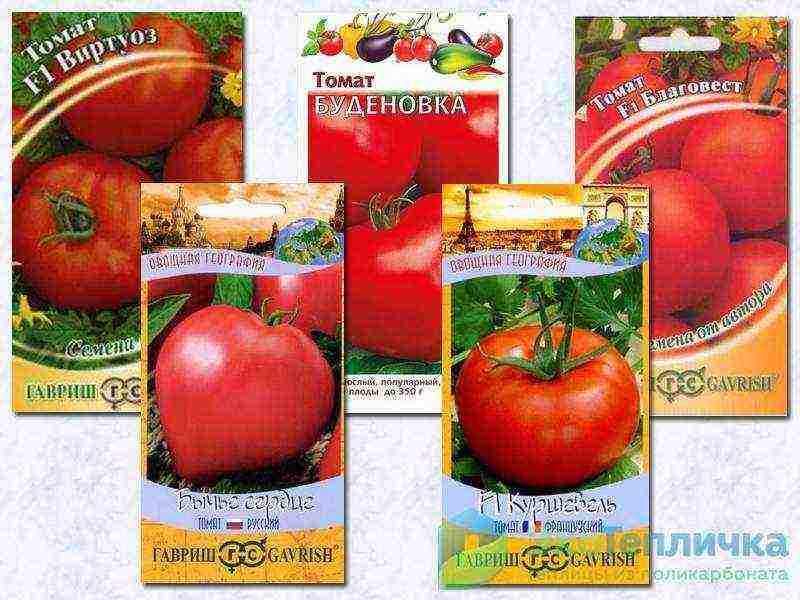
Medium-sized varieties of pink tomatoes
For lovers of pink tomatoes, we suggest planting a low variety with fruits of excellent taste in the greenhouse. You can choose one of the following:
- Banzai... This variety can be planted close to low walls, because the bushes grow no higher than 100 cm.The plant is formed into two or three stems. The variety needs regular watering, is extremely picky about soil moisture. With proper care, you will get very tasty, fragrant, with tender pulp, fruits weighing about 160 g. Productivity is 3 kg from one bush.
- Bull heart pink... A productive variety with a low-leafed bush height of 150 cm. Fruiting should be expected in 120-130 days. Large, heart-shaped fruits of a bright raspberry hue are valued for their excellent taste, fleshiness, and a small amount of seeds. The first ripe tomatoes can reach 400 g by weight, the next - about 200 g. Tomatoes are used mainly in salads, and can also be canned by cutting into pieces.
- Pink... If you need the best varieties of pink tomatoes for greenhouses that are not affected by late blight, then feel free to choose Pink, which ripens in 90-95 days and gives off the harvest almost completely in the first month. Late blight simply does not have time to develop by the time of fruiting. The bush grows up to 150 cm. Fruits are tied with 6 tassels. rounded tomatoes weighing 120-125 g are appreciated for their excellent taste, used in salads and for canning. Productivity 3-4 kg from each plant.
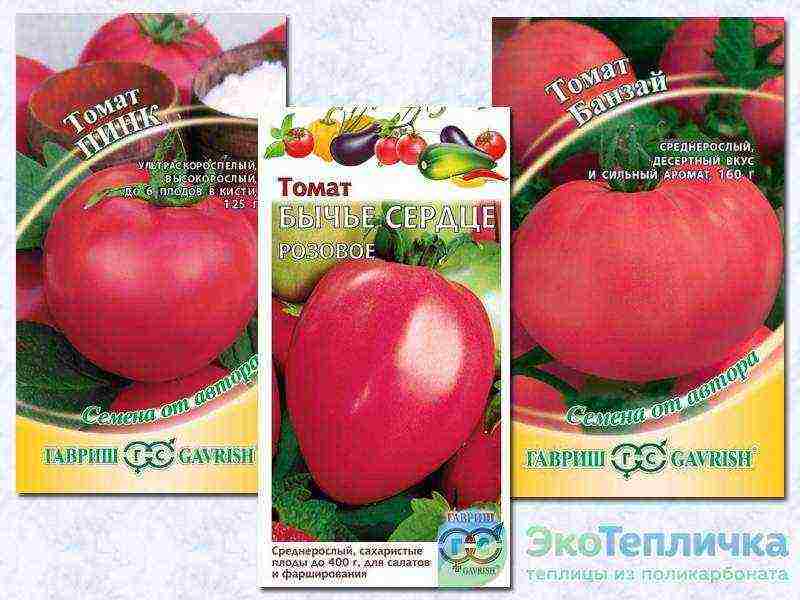
Yellow medium-sized tomatoes for greenhouses
Yellow tomatoes not only cheer you up with their color, but also have a beneficial effect on health. They are hypoallergenic, improve digestion, and have a beneficial effect on the kidneys and liver. Of the medium-sized tomatoes, the following varieties deserve special attention:
- Persimmon... A mid-season variety grows up to 70-100 cm and bears fruit for a long time. If you regularly feed the bushes, and remove the fruits in blanche ripeness with ripening in the plucked form, then the yield reaches 3 kg from each bush. A salad variety with delicate golden-orange large fruits, the weight of which can reach 300 g. There is a lot of carotene in the pulp.
- Yellow giant... The plant grows up to 140-150 cm and belongs to the best varieties of yellow tomatoes for greenhouses in terms of yield. 10-11 kg of large ribbed fruits with a rich sweetish taste can be removed from the bush. Tomatoes weigh up to 700 g. Their tender fleshy pulp is used for salads and canning in the form of pieces. Maturation occurs in 100-105 days. Requires pinching, garter stems.
- Fig yellow... This mid-early new variety is appreciated for its particularly tasty and aromatic fruits with juicy sugar pulp. Ribbed fruits, weight 200-250 g. Used for salads, juices, canning. Disease resistance is complex. The plant is formed into one stem by transferring the growth point to the stepson.

Medium-sized varieties with original tomato color
If you are thinking about what varieties of tomatoes for a greenhouse will look especially impressive when freshly cut and in winter preparations, then choose tomatoes with an unusual color of the fruit. Moreover, among the medium-sized ones there are many varieties of unusual color with good yield and taste. We propose to evaluate the following developments of breeders:
Frog princess... Ripe flat-round fruits of this variety are emerald green with a slight bronze tint.The bushes are powerful, up to 150 cm. Ripening occurs after 11-115 days. Large, slightly ribbed fruits have an exquisite taste, and the average weight is 250 g. The purpose is universal: fresh table, canning, home cooking. The yield of the variety is up to 6.5 kg / m2.
Tiger... Small rounded fruits (30-50 g) of very unusual color with yellow stripes on a bright red background. The bushes grow up to 150 cm, the plant bears fruit after 110-120 days. Ripe tomatoes can be used in salads, for freezing and canning. The yield of the variety is 4.5-5 kg / m2.
Striped flight... Another original variety with striped small fruits (30-40 g), but already with green stripes on the background, which changes from red-brown to pink as it ripens. The bushes are fruitful, literally sprinkled with tomatoes. Dense fruits keep their shape perfectly when canning and retain their elasticity. The taste is excellent when fresh and salty.
Black moor... Clustered tomato is one of the best varieties of black tomatoes for a greenhouse in terms of a set of indicators: it is very productive (up to 6 kg per bush), universal purpose, perfectly transported, excellent taste and shape. On each hand, up to 18 fruits weighing 40-50 g are tied. Ripening occurs no later than 115 days. Plum tomatoes, brown-brown, dark spot on the base. The pulp is dense, juicy, fleshy, sweet taste.
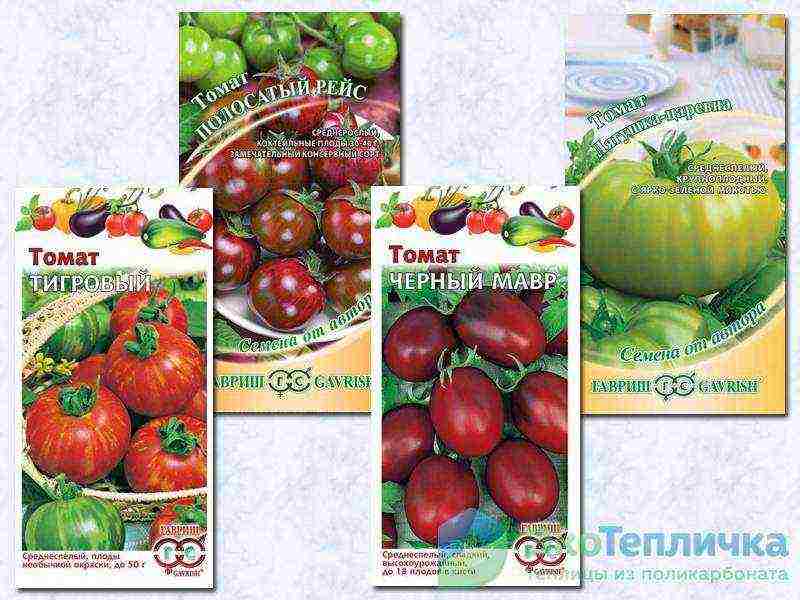
Among medium-sized tomatoes, there are enough original and productive varieties with an excellent taste to draw up an optimal planting plan for a low greenhouse of any size and shape.
